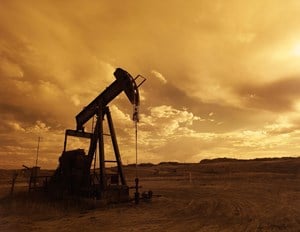
From the Ground to Your Tank: The Role Carburizing Plays in the Manufacturing of Oil Drill Bits-Part 2
Posted on March 16, 2018 in Blog

Drilling for Oil – Then and Now
Humans have been drilling for oil for centuries. The first oil wells were drilled in about 347 C.E. in China in which people used bits attached to bamboo poles. Because they were using rudimentary tools and techniques, broken drill bits were a problem early on. Corrosion of the tool bits was also a problem.
By the 19th century, people were using spring poles to drill. Workers would use a cable to attach a drill bit to the head of a springy wooden pole, insert the pole into the ground, and then bounce up and down on stirrups attached to the springy pole to drive the bit into the ground. Even though metal working had advanced significantly by this time, corroded and broken drill bits still slowed production.
Steam-powered drilling rigs took over operations during the U.S. Civil War. Other advancements in oil drilling throughout subsequent decades have modernized the process. Computers, touch screens and joysticks now allow operators to control drilling; hydraulic “legs” allow rigs to “walk” to new locations, reducing the need to tear down and set up every time a rig needed to be moved. Fortunately, modern manufacturing techniques are making corroded and broken drill bits a thing of the past.
Drill bit manufacturers now use carburization, a procedure that hardens the metal surfaces of drill bits while allowing the metal underneath to remain soft. Carburization results in the formation of a thinner, harder layer of metal, known as the surface case, which strengthens the piece and prevents corrosion.
Lindberg/MPH is a leading manufacturer of custom and standard industrial heat treat furnaces. Their equipment has been used by the oil drill bit manufacturers to perform carburization of the drill bits. Founded in 1917, Lindberg/MPH has been a supplier to the petroleum industry over the years playing a role in the process of bringing fuel to your gas tank. Lindberg/MPH now has more than 75,000 industrial furnace installations worldwide, including numerous installations serving the oil and gas industry.
For more great information like the above, follow Lindberg/MPH on both Facebook and LinkedIn.

